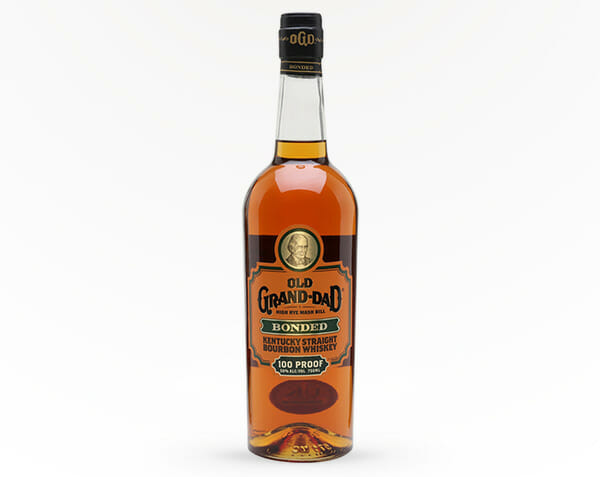Bonded bourbon is making a huge return in the market. Unfortunately, a lot of bottles are now becoming overpriced and hard to find. But don’t fret. There are still many affordable bonded bourbons out there.
On March 3rd, 1897, the famous Bottled-in-Bond Act was passed. This statute made it mandatory for bonded bourbons to be distilled by a single distillery by one master distiller, all in the same season. It must also be aged in a government bonded warehouse, where treasury agents can monitor aging barrels.
Bonded spirits must also be aged for a minimum of four years and be bottled precisely at 100 proof. The spirit also cannot be mixed with another type of spirit. For instance, if there’s rum in the bottle, it cannot be mixed with whiskey.
This standard of production is confirmed by a seal of quality printed on the bottle. When you see that seal, you know that the spirit you’re buying is aged well and not watered down. The quality of the drink is guaranteed with this seal.
For this reason, many bourbon enthusiasts will only drink bourbon that is bonded. Other bourbons are generally cheaper and lack the elegance of a bonded liquor. If you ever get your hands on a high-quality bottle of bourbon, it is most likely bonded.
It’s no surprise that this revered drink is starting to trend again. It was only a matter of time before people started to realize its potential.
If you’re looking for a bold but complex spirit, there truly is no better option than a bonded bourbon. There’s a reason this style of whiskey has existed for over a hundred years. Keep reading below with Saucey to learn more about bonded bourbon and why it’s making a comeback.
What is Bonded Bourbon
Here’s a fun fact: September is National Bourbon Heritage Month. It is considered a time to celebrate what is known as America’s “native spirit.”
So what exactly is bourbon? Well, in short, it’s a distilled spirit made from fermented grain. But there are several prerequisites it must meet.
If you’ve had this spirit before, you probably have heard of the “Kentucky Bourbon,” one of the main styles of the drink. Though its history is murky, many believe that bourbon’s name comes from Bourbon County in Kentucky, an area known for its whiskey distilleries.
Today, much of the bourbon in America is produced in Kentucky. However, it doesn’t have to be. Bourbon can be made anywhere in the country. It just has to stay within the borders of the United States. Bourbon is even made in Hawaii.
Some say that the drink name comes from Bourbon Street in New Orleans, where a major whiskey-selling port is.
Besides being made in America, bourbon must also be distilled from a fermented mash of grains, including at least 51 percent corn. It can also be made with wheat, rye, and barley.
Another requirement of bourbon is that it’s aged in new oak barrels that have been charred. It must also be distilled at 160 proof or lower, aged for two years in a barrel at 125 proof or lower, and be bottled at 80 proof or higher.
The proof of a liquor measures its alcoholic strength. It is defined in America as twice the percentage of a drink’s alcohol by volume. So if a spirit is bottled at 80 proof, it will have an ABV of 40 percent.
If your whiskey doesn’t meet these standards, it’s not bourbon.
The Bonded trend
American whiskey sales continue to grow every single year. Much of this success can be attributed to the “craft movement,” a move in the community toward higher-end, luxury spirits. The trend of Bonded Bourbon has been a huge part of this movement.
Several notable brands have hopped on the Bonded bandwagon in recent years. In 2014, Riff Distilling was started, one of the few brands that exclusively produces bottled-in-bond spirits. In August of 2018, Jack Daniel got in on the action, releasing a 100-proof bonded bourbon.
Jim Bean has also released bonded renditions of their Old Grand-Dad, Jim Beam, and Old Overholt. Even Old Forester carries an 1897 bonded bourbon as well.
The bonded trend doesn’t just stop with whiskey, though. Heaven Hill Brands, the sixth biggest distilled spirits brand in the U.S., has made bonded versions of their Old Fitzgerald, Mellow Corn, Heaven Hill Old Style, and Evan Williams white label. Laird’s has a bottled-in-bond apple brandy as well.
These are just a few of the big names right now in the bonded spirit industry.
In the old days, whiskey was often tainted with harmful additives like neutral grain spirit, iodine, and tobacco. Not only do these additives destroy the integrity of the whiskey’s flavor, but they can also be dangerous to consume.
Luckily, more and more whiskey brands today are making a conscious effort to improve their quality control and production standards. Without a doubt, the brands that produce bonded whiskey are leading the charge.
The bonded version of the drink is growing rapidly in popularity, but so is regular bourbon. In 2020, distilleries in Kentucky produced 2.1 million barrels of bourbon. It was the second straight year that the state had produced over two million barrels of the spirit.
Bonded Bourbons to try
The Old Grand-Dad Bonded Bourbon is one of the top spirits on the market. The original version of the drink has been produced since the 1800s. Even during Prohibition, Old Grand-Dad bourbon was very popular, being produced by American Medicinal Spirits Co. and distributed as a medicinal drink.
The Old Grand-Dad brand was started by Raymond B. Hayden and named after his grandfather Meredith Basil Hayden, Sr. Ownership of the company has shifted many times since its inception and is now owned by Beam Suntory.
This bourbon is a part of “The Olds” Collection of the brand, including Old Overholt. Old Grand-Dad is bottled in three proofs: 80, 100, and 114. Before 2013, the brand’s lowest proof of bourbon was 86.
Another quality bourbon to try is Jim Beam Bonded, one of the latest editions of Jim Beam to be released from the famous Kentucky distillery.
This spirit acts as a middle ground between white and black whiskeys. It is made primarily from corn, which makes up 77% of its content. This drink embodies the sweet, candy corn essence of traditional Jim Beam.
Jim Beam has been producing whiskey since 1795. They are one of the most trusted names in the industry. Their recipes have been refined over seven generations of the Beam family. They currently offer bourbons with 80, 86, and 100 proofs.
History of Bourbon
The origins of bourbon are somewhat controversial. But the most popular story of how this spirit came to be is the account of Elijah Craig,
Craig was a Baptist preacher, as well as a distiller. He was also an inventor. Before becoming a bourbon producer, Craig had helped develop revolutionary techniques to make cloth, paper, and rope. According to the legend, he was the first to age bourbon in charred, American oak casks.
The story goes that one day, Craig reused an old barrel he had lying around to age some homemade corn hooch. He sanitized the barrel by charring it, which gave the drink a more defined color and flavor. And thus, bourbon was born.
Despite this account, bourbon likely had multiple creators. Corn whiskey was actually distilled in Kentucky years before Craig had even arrived in the state.
Aging in charred casks was also documented decades prior as a method of mitigating sap blisters in the wood that changed the whiskey’s taste.
Somewhere along the way, the sour mash process was introduced. This method of production calls for the mashing of grains before distilling them. This process helps maintain the chemical balance of the blend, preventing bacteria growth and upholding its quality from batch to batch.
The takeaway
A great bourbon should be produced with the highest standards of quality possible. It should have depth, flavor, and texture. It should be void of tacky additives like fruit syrups or tobacco.
As many bourbon producers turned to cheaper, cost-cutting ingredients for their products, others made an effort to preserve the quality of traditional bourbon.
The bottled-in-bond standards reward efforts to put out high-quality spirits. Today, that seal of approval is something that all consumers are looking for.
Hopefully, we will continue to see more amazing bottles be released as the years go on. And our fingers are crossed that the prices stay low.




